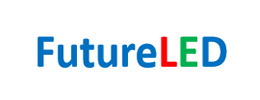At present, the small-pitch LED display has become an important engine for the growth of the industry. With the continuous breakthrough of the dot pitch, the display effect of the LED display continues to improve, and the application field of the product is becoming wider and wider. Especially with the development of small-pitch LED displays in the field of commercial display, it is rapidly competing with display products such as LCD and DLP.
Video conferencing is a rapidly developing market. Related data show that during the "Thirteenth Five-Year Plan" period, the growth rate of China's video conferencing market will exceed 30%. By 2020, the domestic video conferencing system market will exceed 59 billion yuan. Growth trend. Facing this big cake in the video conferencing market, LED display companies naturally have no reason to watch, and whoever can grab more shares from this big cake in the future depends on whose cutting ability is stronger.
Right now, huge business opportunities are prompting more companies to flood into this segment. In addition to LED display products, DLP splicing and LCD splicing display products are also competing fiercely.
DLP splicing is mainly based on DLP projectors, coupled with image processors to form a high-brightness, high-resolution, and vivid color TV wall, which can display various network signals and video signals, and the screen can roam, open windows, zoom in and zoom out at will And superposition, however, there are unavoidable seam defects. It also lacks in color expression. Although LCD splicing has many advantages such as small thickness, light weight, and low energy consumption, it is the mainstream of display systems such as video conferencing, but it also has fatal flaws in the seam, which seriously affects the visual experience.
Compared with DLP and LCD, the small-pitch LED display has unique advantages. The small-pitch LED display has no seam problem, can display clear images and videos, realize multi-channel output of signals, seamless splicing and can realize splicing of any area, which is not available in other display devices. The small-pitch LED display has a wide range of color gamut, which is greater than 100% NTSC color gamut, accounting for more than 36% of the full color gamut, while traditional display products, whether it is LED backlight liquid crystal or cold cathode light emitting tube (CCFL) liquid crystal panel DLP is still LED light source, and its color gamut covers about 70% of the NTSC color gamut. These characteristics of the small-pitch LED display can make it easier to implement HDR, restore true colors, and have excellent color performance. In order to meet the needs of video conferencing, small-pitch LED displays also need to have super-large viewing angles, high refresh rates, uniform screen consistency, and easy maintenance. These current small-pitch LED displays can basically meet the requirements.
It is these excellent characteristics that allow small-pitch LED displays to advance in the field of video conferencing systems and continue to erode the market of traditional display products. However, small-pitch LED display screens have become a big hit in the field of video conferencing. With the expansion of applications, the reliability of small-pitch LED displays and the failure rate of lamp beads have gradually been exposed, which will bring a lot of follow-up development. Challenges.
The problems encountered by small-pitch LED displays in video conferencing are also the current pain points of small-pitch LED display products. In order to solve the pain points of the small-pitch LED display, many companies in the industry have also made various attempts, but there is no perfect solution yet.
Facing a growing market, opportunities and challenges coexist. To be sure, whoever can overcome the difficulties of small-pitch LED displays in the future and provide customers with the best quality products will be able to get a bigger share of the pie in this field. However, we must also see that although LED display companies have strong competitiveness in this field, the market share of DLP and LCD is constantly being squeezed, but these traditional DLP, LCD LCD splicing companies face LED display companies The sudden emergence of a new force has been through the integration of industrial resources to defensively, through the acquisition of LED companies in the industry, easily intervened in the LED field. It is foreseeable that more third-party companies will enter the LED field in the future, and the competition in the video conferencing market will become increasingly fierce.






